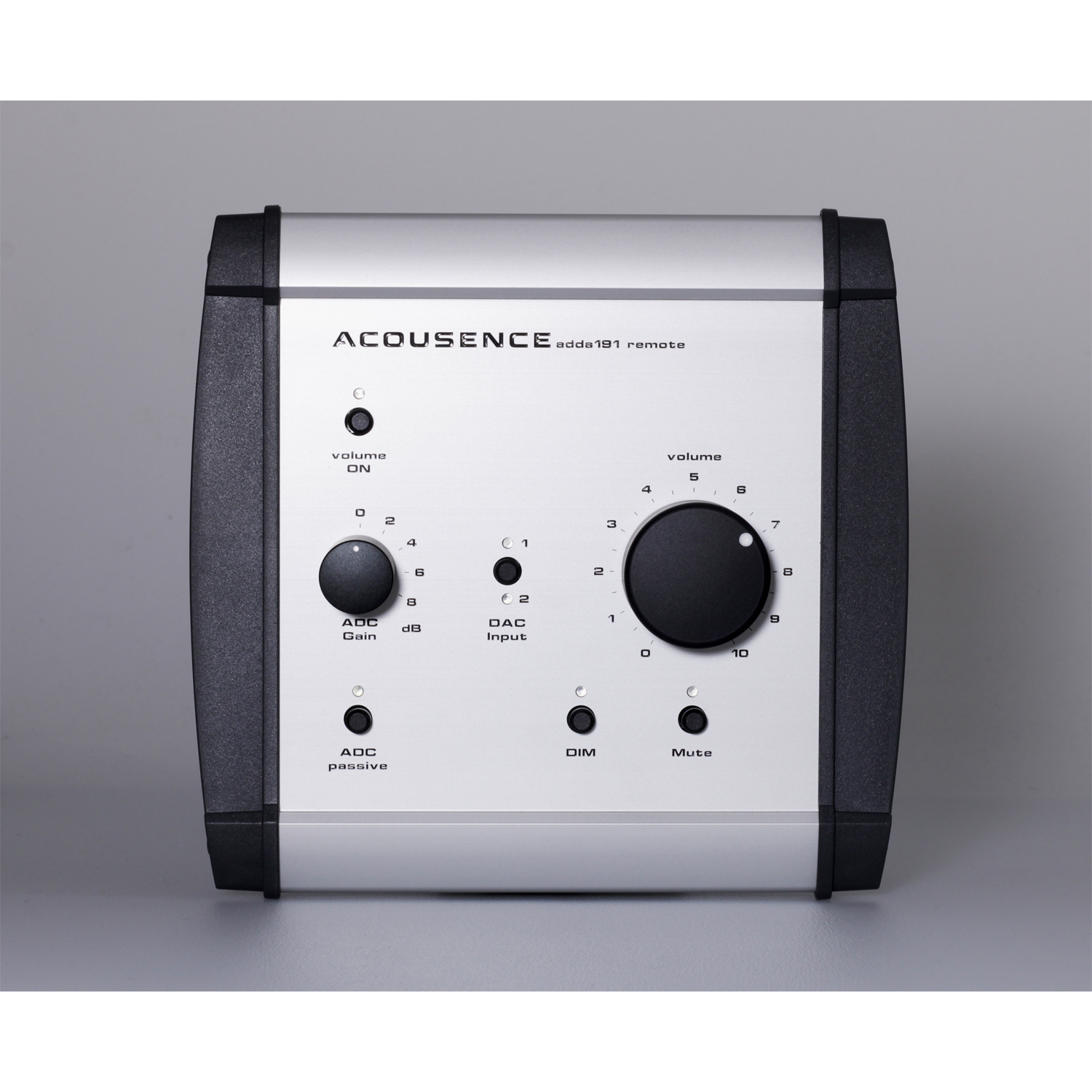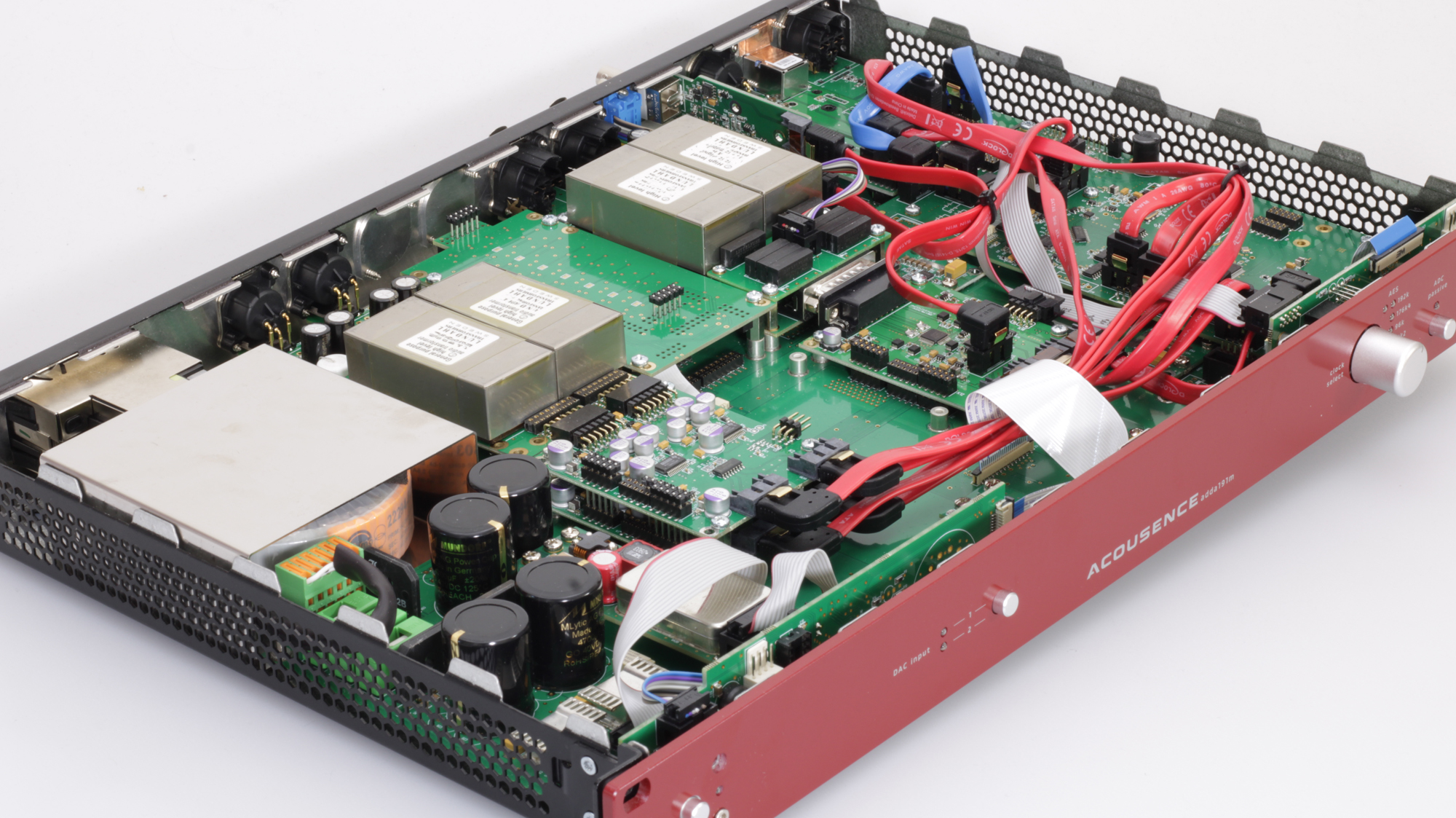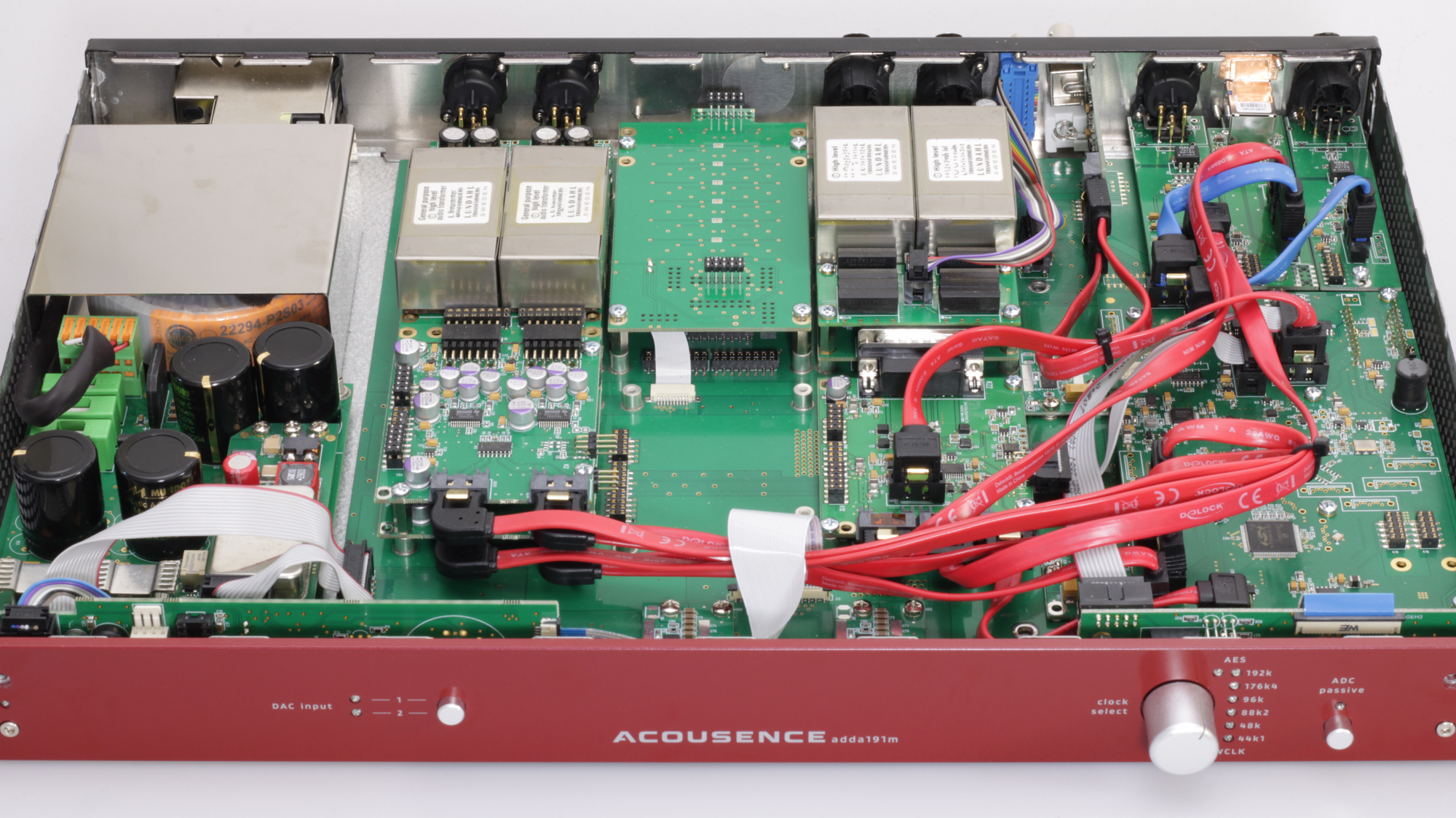The adda191m is a modularly configurable converter system in 19″/1U format. The standard configuration is the ADDA converter, i.e. a 2-channel AD converter plus 2-channel DA converter. Alternatively, partial configurations as a pure AD converter or pure DA converter are also possible. A new feature of the adda191m is the option of equipping four DA converter channels. The “m” therefore stands for multi-channel or mastering, as an analogue mastering chain usually requires just such a configuration: A DA converter for playback of the source material, an AD converter for digitisation after analogue processing and then another DA converter for monitoring or assessing the work.
On the analogue side there are – in the audiophile sense – slim and straightforward signal paths realised with the best components. The analogue signal routing and processing is completely symmetrical. Our special purely passive analogue input stage is used for the AD converter: there are only two high-quality input transformers between the analogue inputs and the AD converter chip, i.e. no amplifier stages in the signal path before the actual converter. One new feature of the adda191m is an optional active amplifier stage. The tried and tested input section with transformers remains in the signal path, as this is essential for the unrivalled sound of the ADC. However, the subsequent active stage delivers a subtly different sonic signature and can be set to other input sensitivities using internal jumpers.
The DA converter is designed in “arfi-DAC” topology, i.e. a total of four DAC outputs generate the stereo signal in a sophisticated manner via transformers in the I/V stage. An upgrade to “arfi-reference DAC” topology (eight DAC outputs generate the stereo signal) is also available.
As an alternative to the second DAC, a very high-quality volume control can be installed as an option. The output level is then switched via fixed resistors using gold contact relays. It is controlled via an external controller, which also switches the sources and passive/active mode and has DIM and mute buttons. The input sensitivity of the ADC can also be switched from there in four 2dB steps.
Our Femto-Clock-II is used in the clock section. This module also handles the clock distribution to the converter boards, thus ensuring the shortest possible paths and maximum precision. External sources via AES or word clock thus achieve a precision that could otherwise only be achieved by using the internal clock generators.
In detail, we have made some design decisions in our converter that deviate from the mainstream out of sonic conviction: As with all our previous devices, DSD is deliberately not supported (see the article on our website “Getting the sampling theorem right!”) and there are no other user-accessible gimmicks such as integrated upsampling, switchable digital filters or the like.
In our view, all this together is the key to music in the sense of ACOUSENCE: natural sound, artistically captivating and emotionally moving music reproduction!











